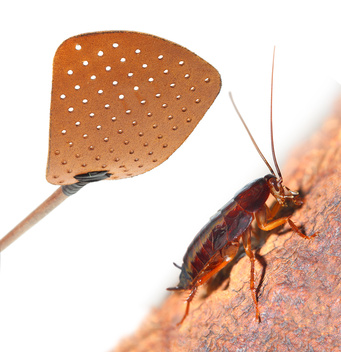

In today’s world, we have many options and strategies for managing pests and insects, not only for farms, but also at the personal level. Outdoors, we can light citronella candles, use electronic pest systems, spray pesticides or use an insect repellant. Indoors, we can have a professional come spray, we can purchase insecticides from the store and we can better seal our houses so that pests won’t enter. Did you ever wonder what people did years ago?
First recorded pest control
According to the Penn State College of Agricultural Services, the first recorded pest control use was about 2500 B.C. During this time, the ancient Sumerians would spray their crops with a sulfur-based compound. Due to the effectiveness, sulfur-based compounds are still in use today. However, they are no longer the only insecticide that is proven to work.
Also in the early days, many households would simply grow many more crops than needed in order to “share” with the insects and pests that would inevitably eat from their bounty. Some ancient cultures would also worship different bug or pest gods – all in the hopes that these gods could keep bugs away, illnesses at bay and make sure crops grow abundantly. Their pest management style was certainly different from what we consider acceptable today.
Since that time…..
Early cultures experimented with all kinds of other pest management solutions and learned more about what works and what doesn’t. The ancient Chinese and Egyptian communities used herbal and essential oil solutions to a decent degree of success.
Ancient cultures, which included the Chinese, were also responsible for many other management solutions. Some of these are:
* The use of predatory insect to control the bugs eating the crops
* The use of proper timing – when to plant crops to reduce the exposure to bugs
* The use of soaps to control bugs
* The use of nicotine to kill bugs
* The use of mercury and arsenic to kill pests such as lice
* Mechanical fly traps were created to trap pests
Modern days:
Up until the 1940’s all pest control products were plant-based or natural products. This is when DDT was introduced. Highly effective and much cheaper to produce and sell, DDT became the insecticide to use for approximately twenty years.
In the 1960’s, Dr. Rachel Carson published a book outlining the dangerous effects of using chemically-based insecticides and a growing interest in “green” methods began to develop. Due to the dangerous nature of the chemical, DDT was banned for use in 1972.
Today, there are multiple options available. Some pest control methods are targeted towards a specific pest while others are broad in nature. Some are more natural than others. But one thing is for certain – when it comes to taking care of your own pest problem, it is easy to find an option that fits you.
